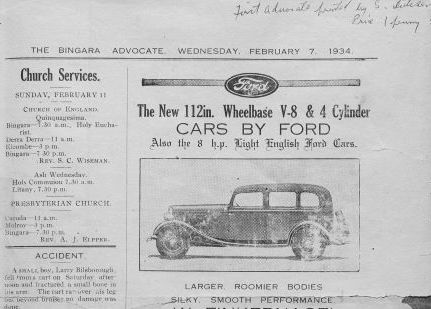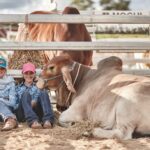Check out NSW Farmers' gallery of photos from Primex 2021 below, photographed by Anthony Ong.…
Stories that matter, from Gwydir Shire

The first edition of The Warialda Standard was printed on May 4, 1894. Priced at sixpence, the newspaper informed residents about things such as new products, local sales and updates in the wool market. Readers were also informed of when a travelling doctor was in town.
Mr Robert Buist was the editor of The Warialda Standard until his passing in 1902. In the following years it had multiple editors and various owners.

A newspaper from nearby Bingara � The Bingara Advocate � was established in 1934 by editor Samuel Dickson, and it was printed for a long time on the original printing press for The Warialda Standard. The paper kept citizens informed throughout many defining historical moments such as World War II, and when the first man landed on the moon. Samuel ran the publication until his son Rex took over, and then later he returned as editor when Rex served the country during the war. The paper cost one penny for a weekly edition.
In 1983, Doug Wilson became the owner and editor of The Warialda Standard, and for the next 25 years he ran the newspaper. His wife Pattie Wilson was also heavily involved, working on her two-page weekly spread titled �Pattie�s Page�. The popular piece included news from the locals, household tips and tricks, recipes and, more famously, her section titled �A lady should know.�
A fire in the 1970s destroyed the newspaper�s office, along with many of the archives. Luckily some examples can still be found online through The National Library of Australia website, Trove.
To this day, the historic printing press remains in the same building on Maitland Street in Bingara. Because it�s so big and cumbersome, the only way to get it out would be via a crane through the roof.

A new era of news
In 2015 Nancy Capel, who owned The Bingara Advocate, purchased The Warialda Standard and the two papers merged in 2018 to form The Gwydir News.
The Gwydir Shire Council took on permanent ownership in 2019 after Nancy�s retirement, as a buyer couldn�t be found. It ran as a weekly newspaper until the end of 2020, and was then reformatted into a monthly newsletter-style publication.
Kim Miller has been the editor of The Gwydir News since the beginning of 2021, and she runs it with the help of a small communications team within council. There was much discussion about whether it was the role of the council to keep it going, and eventually it was decided that it was an important service for the community, and so should stay.
�There are around 6,000 people in the 9,121 square kilometre region, so it�s a big area to keep on top of,� Kim says. �The news is hyper-local content and covers things that are happening in the community as opposed to only about the community. So there was a lot of concern about potentially losing that. Our country towns are already losing enough elements of what has kept them going.�

Nowadays locals are encouraged to download the newspaper free online. It�s also available in a magazine-style format on the Issuu platform that many publishers use. Hard paper copies are still available for $2.50 per month, which covers the shipping cost.
The costs to produce the publication are covered by council and advertising. �A lot of our advertisers were carried across when the publications merged from weekly news into the current monthly newsletter,� says Kim. �They have been very loyal to us.�
The ongoing support for The Gwydir News emerges directly from the strong community spirit of Gwydir Shire, and some of the subscribers are people who once lived in the shire, and want to stay in touch with what�s happening in the region.
�The towns here are heavily based on generational families that have been here for a very long time,� says Kim. �It�s a place where everybody knows everyone by name, and we�re lucky that people know who to look out for and who to look after. I think that�s something that draws people to living in smaller communities.
�It�s so nice to be able to share people�s stories in our newsletter each month, and some locals contribute regularly. We encourage others to get in touch and share their stories with us.�
If you enjoyed reading this feature, you might like our story on rural mothers banding together on Motherland.








